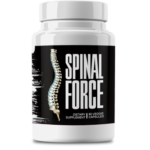This Village-Made Chinese Pain Reliever Eliminates Back And Joint Pain!
How to Sleep Better with Hip Pain Sciatica

How to Sleep Better with Hip Pain from Sciatica
Waking up with that sharp, shooting hip pain again? You're definitely not alone. Sciatica turns what should be restful nights into hours of tossing, turning, and frustration. But here's the good news—small changes to how you sleep, stretch, and even set up your bedroom can make a world of difference. Let's walk through practical solutions to help you finally get the rest you deserve.
Why Sciatica Wrecks Your Sleep (And What You Can Do)
That nagging hip pain isn't just keeping you awake—it's creating a vicious cycle. Poor sleep makes the pain feel worse, and increased pain makes sleep even harder to come by. Understanding what's happening is the first step to breaking free.
The Sciatica Sleep Thief
Picture your sciatic nerve as the body's longest telephone wire, running from your lower back down each leg. When something pinches this "wire"—maybe a herniated disc or tight muscle—your body starts sending painful error messages. At night, when you're still, these signals often feel louder.
Your Body's Nighttime SOS Signals
- That "pins and needles" feeling running from your back to your toes
- Moments when your leg suddenly feels weak or numb
- Pain that seems to play tag—just when you find a comfortable position, it moves
- Morning stiffness that makes you feel like the Tin Man needing oil
Sleep Positions That Actually Help
Your favorite sleeping position might be making things worse without you realizing it. Try these tweaks tonight:
The Side Sleeper's Secret Weapon
If you sleep on your side (the most common position for sciatica relief), here's a game-changer: put a pillow between your knees. This simple trick:
- Keeps your hips from fighting each other
- Takes the pressure off your nerve highway
- Stops your top leg from dragging your spine out of alignment
Back Sleepers—Meet Your New Best Friend
For those who prefer sleeping on their backs, slide a pillow under your knees to:
- Maintain your spine's natural "S" curve
- Give your sciatic nerve some breathing room
- Prevent that awful lower back tension
Positions to Avoid Like the Plague
These common habits might be sabotaging your sleep:
- The fetal position: That cozy curl actually cranks up nerve pressure
- Stomach sleeping: Turns your neck into a pretzel and misaligns your hips
- Sitting cross-legged in bed: Tightens the very muscles causing your pain
Your Bed Matters More Than You Think
That old mattress might be part of the problem. Here's what to look for:
The Goldilocks Mattress
A medium-firm mattress (not too hard, not too soft) is just right because it:
- Supports your spine without feeling like a board
- Cushions pressure points without letting you sink in
- Keeps you from feeling every time your partner moves
Pillow Talk for Pain Relief
These specialty pillows are worth their weight in gold:
- Memory foam contour pillow: Cradles your neck like a cloud
- Wedge pillow: Elevates your legs perfectly when on your back
- Full-body pillow: Like a hug for your entire frame
Nighttime Stretches That Actually Help
Five minutes of these gentle moves before bed can mean hours of better sleep:
Yoga Poses Even Beginners Can Do
Try holding each of these for 30 seconds (no fancy leggings required):
- Child's pose: The ultimate "ahhh" for your lower back
- Supine pigeon: Targets the muscle most likely causing your pain
- Knee-to-chest: Like hitting the reset button on your spine
Small Daytime Changes, Big Nighttime Results
What you do all day affects how you feel at night:
Posture Perfection
Simple fixes with big impact:
- Use a small pillow or rolled towel behind your lower back when sitting
- Set a phone reminder to stand and stretch every 30 minutes
- Ditch those unsupportive shoes—your hips will thank you
The Heat/Cold Tango
Alternate between:
- Ice packs: 15 minutes on, 15 off for fresh flare-ups
- Heating pads: 20 minutes to loosen tight muscles before bed
When to Call for Backup
If you notice any of these red flags, it's time to see a doctor:
- Changes in bathroom habits
- Leg weakness that makes stairs difficult
- Pain that overstays its welcome (more than 6 weeks)
Your Personal Sleep Sanctuary
Transform your bedroom into a pain-relief oasis:
The Perfect Sleep Environment
- Keep it cool—between 60-67°F (15-19°C)
- Block out light with blackout curtains
- Try a white noise machine to drown out distractions
Final Thoughts
Remember—consistency is key. Stick with these changes for a few weeks to really see results. Sweet dreams and pain-free mornings are closer than you think!








